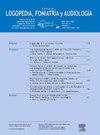内耳蜗系统与耳鸣:系统综述
Q3 Nursing
引用次数: 0
摘要
本研究的目的是通过抑制瞬态诱发耳声发射(teoae)来分析耳鸣患者的内侧耳蜗系统(MOCS)。在5个数据库中检索了182篇文章,其中25篇文章根据纳入和排除标准进行全文分析。大多数文章包括单侧和双侧耳鸣患者,但很少报道耳鸣的病因或分类。抑制TEOAE的常见刺激是60 dB线性咔嗒声和260次扫描,只有少数文章指出信噪比(SNR)≥6 dB。MOCS刺激是对侧的,主要使用50 dB白噪声。通过比较有MOCS刺激和没有MOCS刺激的情况来估计抑制作用,耳鸣患者的抑制作用比对照组低。耳鸣的MOCS评估有不同的范式,使比较困难。由于对MOCS测试本身缺乏共识,因此需要一种标准化的方法,尽管具有挑战性。本文章由计算机程序翻译,如有差异,请以英文原文为准。
Medial olivocochlear system and tinnitus: A systematic review
The purpose of the study was to analyze the medial olivocochlear system (MOCS) through the suppression of transient evoked otoacoustic emissions (TEOAEs) in humans with tinnitus. A search across five databases identified 182 articles, of which 25 were selected for full-text analysis based on inclusion and exclusion criteria. Most articles included patients with unilateral and bilateral tinnitus, but few reported tinnitus etiology or classification. The common stimulus for TEOAE suppression was a 60 dB linear click with 260 sweeps, and only a few articles noted a signal-to-noise ratio (SNR) ≥6 dB. MOCS stimulation was contralateral, mainly using 50 dB white noise. Suppression was estimated by comparing conditions with and without MOCS stimulation, showing a lower suppressive effect in tinnitus patients compared to controls. MOCS assessment in tinnitus has varied paradigms, making comparison difficult. A standardized method is needed, though challenging due to the lack of consensus on the MOCS test itself.
求助全文
通过发布文献求助,成功后即可免费获取论文全文。
去求助
来源期刊

Revista de Logopedia, Foniatria y Audiologia
Nursing-LPN and LVN
CiteScore
1.10
自引率
0.00%
发文量
28
 求助内容:
求助内容: 应助结果提醒方式:
应助结果提醒方式:


